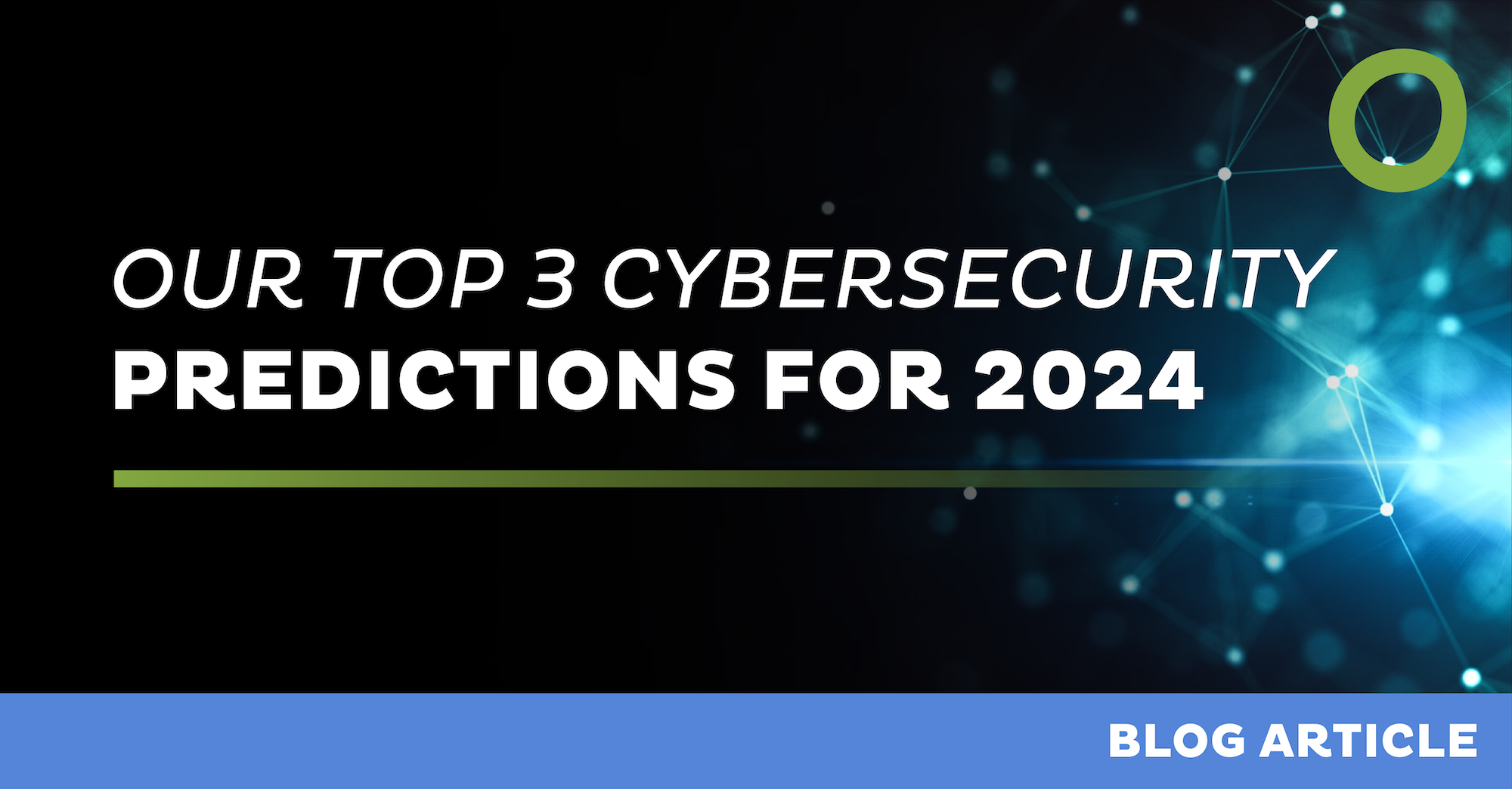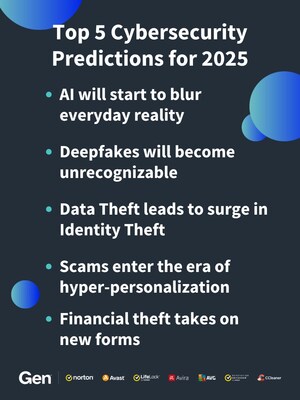Uncover 7 Cybersecurity Predictions for 2025 and their impact on digital security.
Uncover 7 Cybersecurity Predictions for 2025 and their impact on digital security.
Blog Article
The Following Frontier: Insightful Cybersecurity Forecasts for the Coming Year
As we approach the brand-new year, the cybersecurity landscape gets on the verge of noteworthy makeover. Key factors such as the integration of advanced AI innovations, the inescapable surge of advanced ransomware, and the tightening up of data personal privacy guidelines are shaping the future of electronic security. Furthermore, the recurring prevalence of remote job remains to reveal brand-new vulnerabilities that organizations have to navigate. Recognizing these dynamics is vital for expecting the challenges ahead and tactically strengthening defenses, yet the effects of these changes continue to be to be totally discovered.
Surge of AI in Cybersecurity
In the swiftly advancing landscape of cybersecurity, the combination of expert system (AI) is arising as an essential force in improving risk discovery and reaction abilities. AI modern technologies, such as artificial intelligence algorithms and deep knowing versions, are being increasingly released to assess vast amounts of information and identify patterns a measure of safety hazards. 7 Cybersecurity Predictions for 2025. This makes it possible for organizations to proactively attend to susceptabilities before they can be exploited
The increase of AI in cybersecurity is particularly substantial in its ability to automate regular tasks, enabling human analysts to focus on more intricate safety and security problems. By leveraging AI, cybersecurity groups can minimize feedback times and enhance the precision of hazard analyses. Additionally, AI systems can adjust and gain from brand-new risks, continuously fine-tuning their detection systems to stay in advance of destructive actors.
As cyber risks become a lot more sophisticated, the need for innovative options will drive additional investment in AI modern technologies. This trend will likely lead to the advancement of enhanced security tools that integrate anticipating analytics and real-time tracking, eventually fortifying organizational defenses. The change towards AI-powered cybersecurity remedies stands for not just a technological change yet an essential modification in how companies approach their protection methods.
Increase in Ransomware Assaults
Ransomware attacks have actually ended up being a prevalent risk in the cybersecurity landscape, targeting companies of all dimensions and throughout numerous fields. As we advance into the coming year, it is anticipated that these assaults will not just boost in regularity but additionally in class. Cybercriminals are leveraging innovative tactics, consisting of the usage of fabricated intelligence and maker knowing, to bypass typical safety and security procedures and make use of vulnerabilities within systems.
The acceleration of ransomware attacks can be connected to several aspects, consisting of the rise of remote work and the growing dependence on electronic services. Organizations are typically not really prepared for the developing danger landscape, leaving essential facilities prone to violations. The monetary ramifications of ransomware are astonishing, with business dealing with large ransom demands and prospective long-lasting functional disruptions.
Moreover, the trend of dual extortion-- where assailants not only secure data but also intimidate to leak delicate info-- has gained traction, better persuading sufferers to comply with demands. As a result, services need to prioritize durable cybersecurity actions, consisting of routine back-ups, worker training, and incident reaction preparation, to alleviate the dangers associated with ransomware. Failure to do so could lead to devastating effects in the year ahead.
Advancement of Data Personal Privacy Laws
The landscape of data personal privacy regulations is undergoing significant transformation as governments and organizations reply to the increasing worries surrounding individual data security. In the last few years, the execution of thorough structures, such as the General Data Protection Regulation (GDPR) in Europe and the California Consumer Privacy Act (CCPA) in the United States, has established a criterion for more stringent personal privacy regulations. These guidelines stress consumers' legal rights to manage their information, mandating openness and accountability from organizations that gather and refine personal details.

Moreover, companies will need to boost their conformity techniques, investing in innovative modern technologies and training to guard delicate details. The development of information personal privacy laws will not just influence exactly how services operate but also shape consumer assumptions, fostering a culture of depend on and safety in the digital landscape.
Growth of Remote Job Susceptabilities
As organizations remain to accept remote work, susceptabilities in cybersecurity have progressively pertained view it now to the leading edge. The change to flexible work setups has actually revealed critical spaces in protection procedures, particularly as staff members gain access to delicate information from different areas and devices. This decentralized work atmosphere develops an expanded attack surface area for cybercriminals, that exploit unsecured Wi-Fi networks and personal tools to penetrate corporate systems.

To reduce these susceptabilities, companies must focus on detailed cybersecurity training and execute durable safety and security frameworks that include remote work circumstances. This consists of multi-factor authentication, normal system updates, and the facility of clear procedures for data access and sharing. By dealing with these vulnerabilities head-on, companies can promote a much safer remote workplace while preserving operational strength when faced with progressing cyber risks.
Innovations in Hazard Detection Technologies


Positive risk detection has come to be a keystone of modern cybersecurity approaches, showing the urgent requirement to combat significantly advanced cyber dangers. As organizations deal with an evolving landscape of vulnerabilities, improvements in hazard discovery modern technologies are crucial in mitigating dangers and boosting protection poses.
One noteworthy trend is the assimilation of expert system and artificial intelligence into hazard detection systems. These technologies make it possible for the analysis of large amounts of information in real time, permitting the recognition of abnormalities and possibly destructive tasks that may escape conventional protection measures. Furthermore, behavior analytics are being applied to establish baselines for normal user activity, making it much easier to spot variances indicative of a breach.
Additionally, the increase of automated threat intelligence sharing systems facilitates joint defense initiatives across markets. This real-time exchange of information boosts situational awareness and accelerates action times to emerging dangers.
As companies continue to invest in these sophisticated modern technologies, the Go Here effectiveness of cyber defense reaction will substantially improve, equipping safety teams to remain one action ahead of cybercriminals. Inevitably, these advancements will play a vital role Homepage fit the future landscape of cybersecurity.
Verdict
In summary, the upcoming year is expected to witness transformative advancements in cybersecurity, driven by the integration of AI modern technologies and a noteworthy increase in ransomware assaults. Overall, these evolving characteristics highlight the crucial value of adapting to an ever-changing cybersecurity landscape.
Report this page